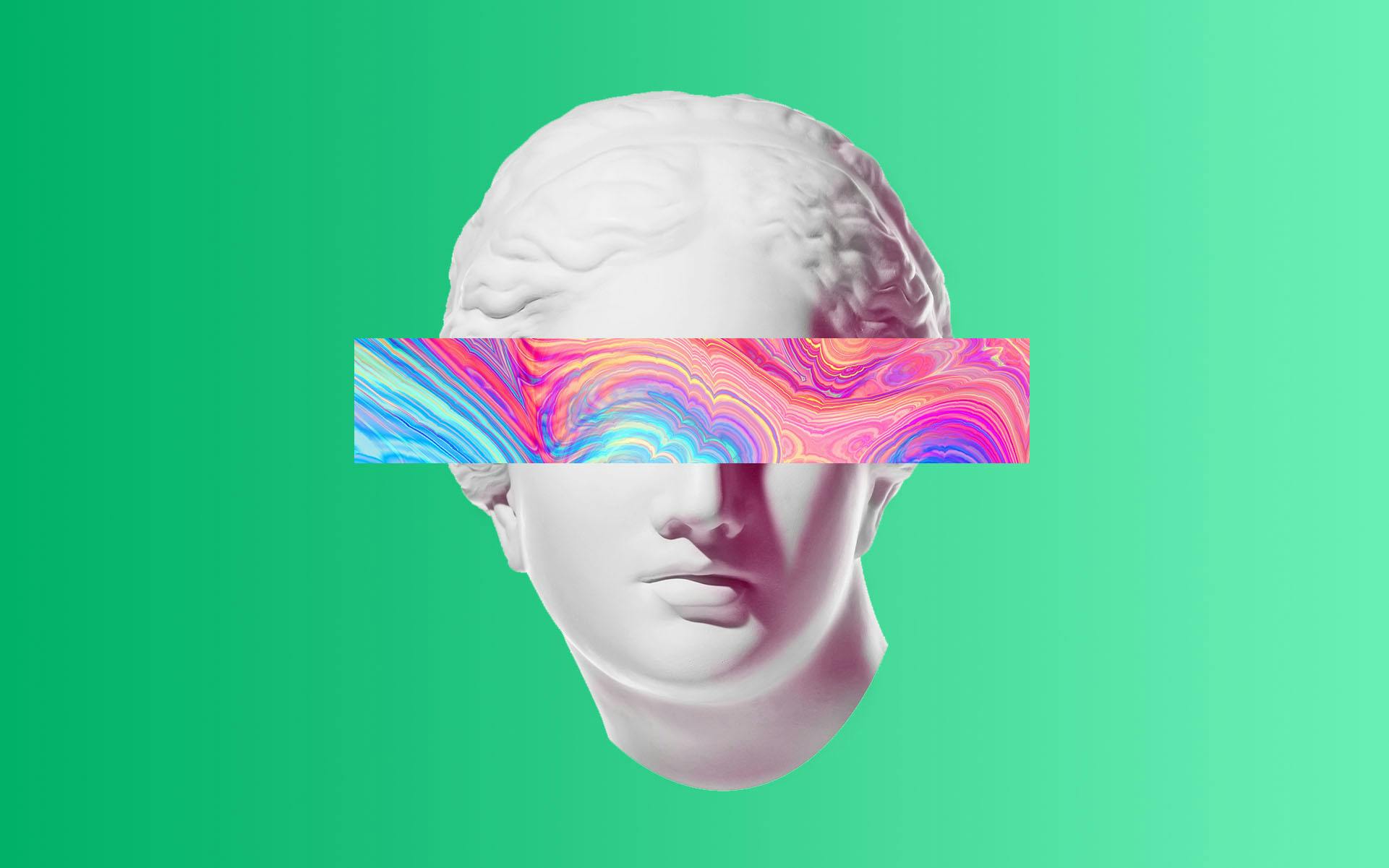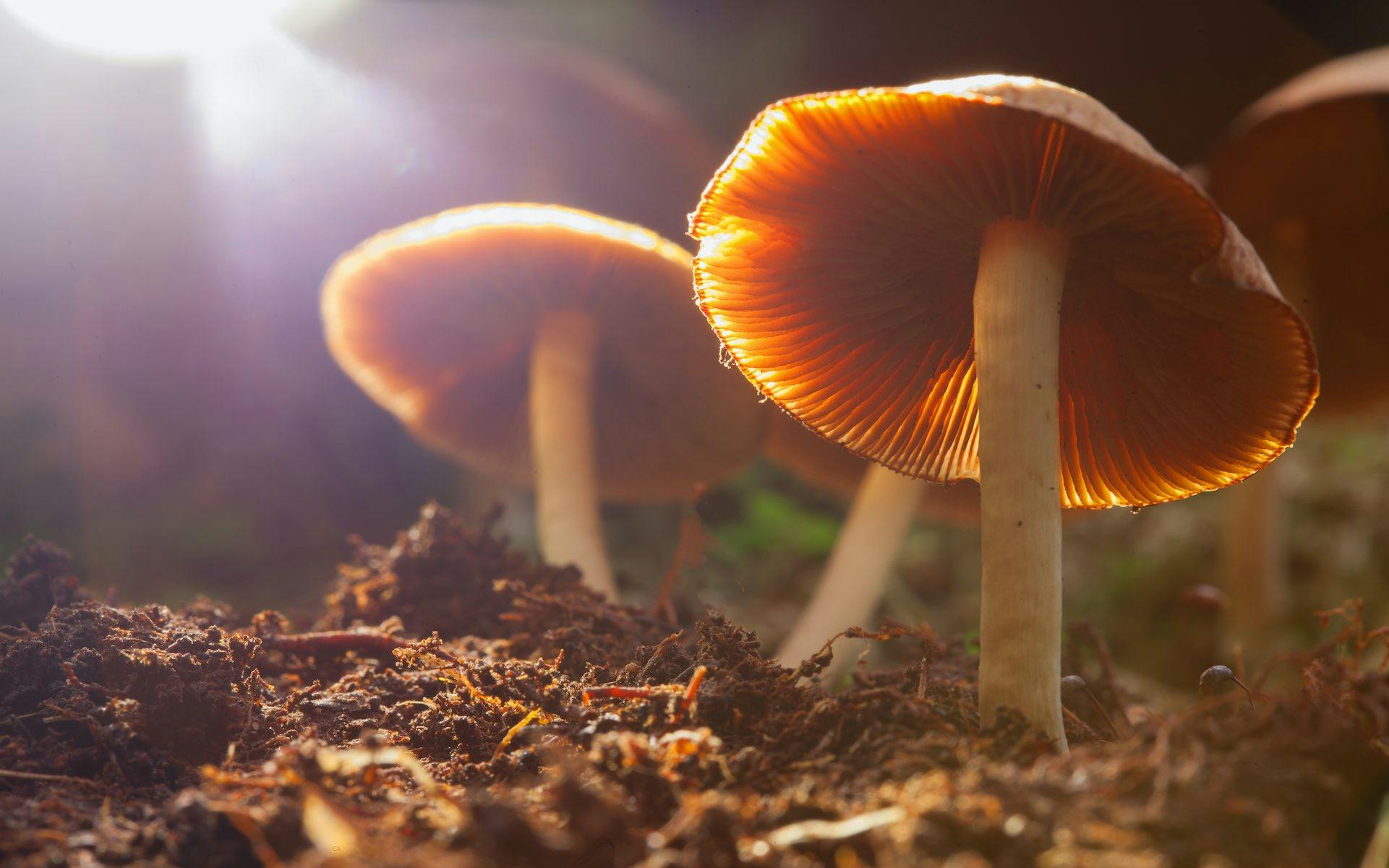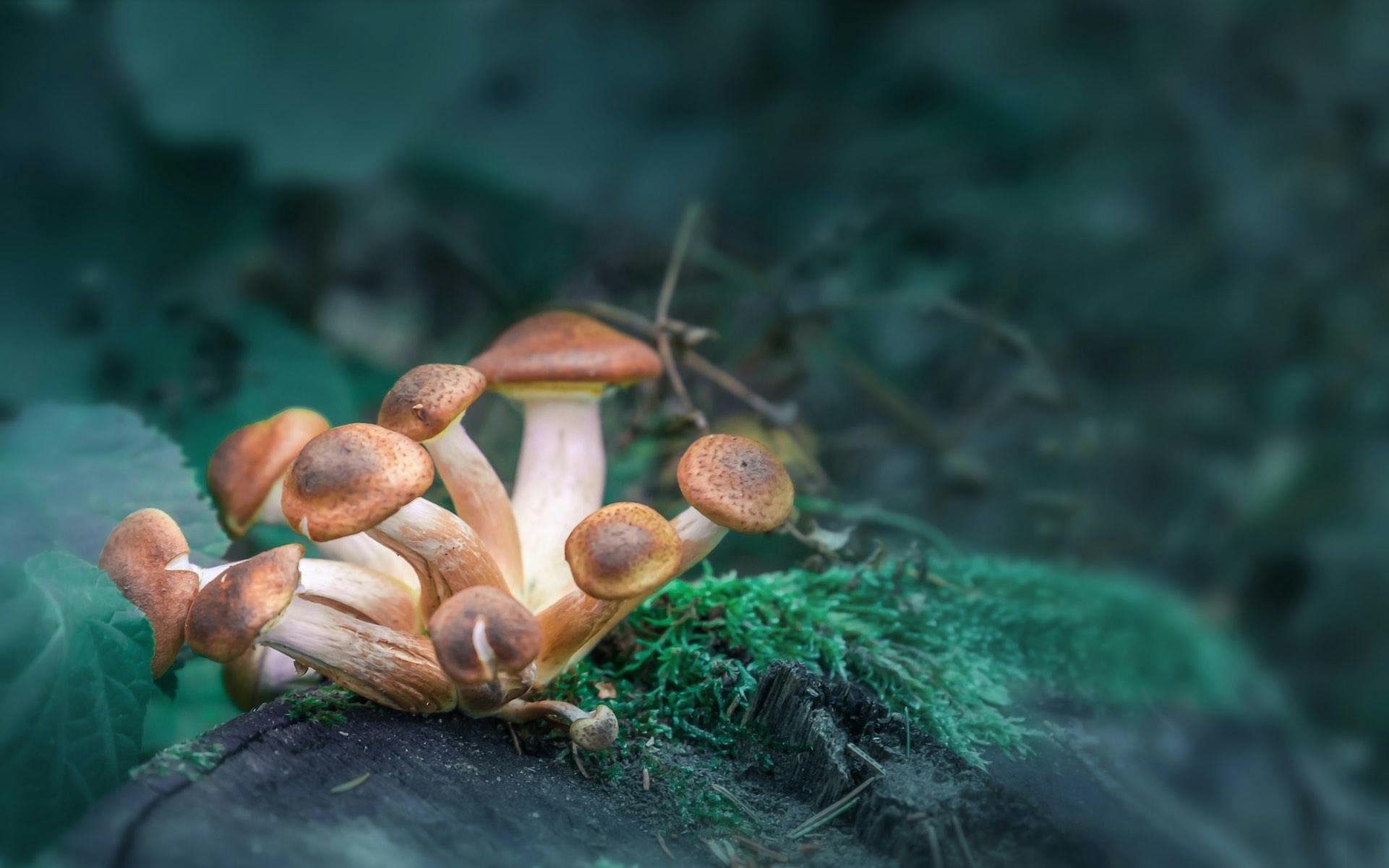Written by Emma Stone

Those who have dipped their toes into the world of psychedelics often share stories of distant galaxies, or a sense of profound oneness with creation. How can a simple compound, often sourced from plants, create such a powerful and transformative experience? What actually happens to a mind under the influence of psychedelics?
The truth is, psychedelics work their magic on the brain in myriad ways. While these compounds affect the brain at a molecular and chemical level, they also shake up stagnant neural networks, alter brain waves, and forge new neurons and pathways in the brain.
A foray into the science of how psychedelics work reveals incredible insights into the nature of human consciousness and how elegantly psychedelics can reorganize the mind—for good.
How psychedelics can help
A single psychedelic session can totally transform an individual’s perspective, dampen or quash addictions, or heal negative behavior patterns. What’s more, these potent compounds can also regenerate healthy new neurons and neural links in parts of the brain languishing under stress or mental illness.
The way that psychedelics work on the brain is particularly significant for those living with mental illness. While conventional psychiatric medications such as SSRIs blunt emotional responses, psychedelics actually enhance emotional sensitivity and sometimes emotional release.
“Combine that with skilled psychological support, and you have a therapeutically potent option for so many people who are suffering,” said Dr. Reid Robison, board-certified psychiatrist and Chief Medical Officer at Novamind.
Psychedelics and brain chemistry
At the molecular level, psychedelics affect the activity of neurotransmitters and receptors in the brain. Neurotransmitters work as chemical messengers, relaying signals between cells in the brain with messages picked up by specific receptors.
Serotonergic psychedelics
The “classic psychedelics,” which include psilocybin (found in magic mushrooms), DMT (commonly consumed in ayahuasca tea), LSD, and mescaline are all serotonergic psychedelics—these share a method of action that is strongly tied to the serotonin neurotransmitter.
When psychedelics activate serotonin receptors, they fire up these receptors in a disorganized way, disrupting the brain’s regular function and triggering a psychedelic experience. As a consequence, this disruption can exert profound effects on how the individual experiences the world around them.
Serotonin receptors are found all over the brain but in particularly high levels in the cerebral cortex, the region of the brain responsible for higher order functions such as perceiving, thinking, understanding language, and memory.
When psychedelics activate serotonin receptors, they fire up these receptors in a disorganized way, disrupting the brain’s regular function and triggering a psychedelic experience. As a consequence, this disruption can exert profound effects on how the individual experiences the world around them.
“You might experience heightened awareness, mood changes, a distorted sense of time, and enhanced tactile senses—essentially a complete sensory experience,” said Robison, who believes the enhanced sensory experience is critical to facilitating the insights that come from psychedelic trips.
According to Robison, the stimulation of the serotonin receptor often leads to more flexible and creative ways of thinking and understanding, enhanced imagination, and greater openness. “The longer-term effect of this blast of serotonin release produces a loosening of the mind and a general increase in optimism and well-being,” he said.
Mescaline and dopamine receptors
Mescaline, found in cacti such as peyote and San Pedro, works on serotonin receptors too, but additionally stimulates activity in the body’s dopamine receptors.
Dopamine is involved in the pleasure and reward-seeking pathways of the brain. Surges of dopamine reinforce an association between the drug and the pleasure that results, leading to addiction. In the case of mescaline, however, the stimulation of dopamine is modest, and current research suggests mescaline use does not lead to addiction or dependence.
Ketamine and glutamate
However, some psychedelics work on other neurotransmitters in the brain. One of the main mechanisms of ketamine is to allow greater release and circulation of glutamate in the brain. Decreased glutamate levels have been associated with depression.
“Ketamine produces some similar effects to the classical psychedelics, but through a different mechanism,” explained Robison. “Ketamine works by blocking glutamate receptors.”
The suppression of these receptors allows glutamate to surge into the brain, activating neural activity, enhancing communication between brain cells, and forming connections between different regions of the brain.
“The result is rapid improvement in mood,” said Robison. “It’s like you’re waking up dormant neurons as you’d do by jumpstarting a car battery, letting the neurons fire and freely communicate again.”
The effects of psychedelics on the default mode network
Psychedelics also reboot the brain by suppressing the default mode network (DMN), a system of connected regions of the brain that play a role in introspective activities like daydreaming, thinking about oneself or others, or ruminating on the past or future.
The DMN is most active when a person is not focused on the outside world, but inward. For this reason, the DMN plays a role in maintaining an individual’s sense of self or ego. Overactivity of the DMN has been linked to disorders such as depression and anxiety.
By inhibiting the DMN, psychedelics increase communication and integration across different regions of the brain. In scans of brains under the influence of psychedelics (check out images here), the whole brain appears to light up as vision, attention, movement, and hearing networks become more connected—a flood of new sensory inputs, perceptions, and experiences enter an individual’s awareness.
The increased communication between high-level (thinking and associating) and lower-level (sensory) areas of the brain appear to expand awareness and overall function. Experts have theorized that this phenomenon consequently blurs or dissolves ego boundaries, and reduces the perception that the self is distinct from others and the surrounding environment.
This loss of ego, or the limited sense of the self as distinct from others, can be healing. “What follows is often an expansive state, where there’s a feeling of peace, oneness with the universe, contact with a higher power, and new understandings,” said Robison. “As the psychedelic wears off, the individual reintegrates with him or herself, but with a renewed perspective and sense of self. With the right therapeutic support afterward, the changes can be lasting and profound.”
Additionally, by weakening the DMN and integrating the whole brain, a person also experiences more fluid forms of thinking that overcome entrenched, rigid thought patterns. “We all have these patterns that get laid down early in our lives that continue to influence our emotions and behaviors for years to come, often without our conscious awareness,” said Robison. “Psychedelics can help us get unstuck, easing the process of cultivating higher levels of self-awareness so you can really honor what it is that you need to thrive in this life.”
The suppression of the DMN can play out in exhilarating but sometimes confusing ways during a psychedelic experience. Following ayahuasca, for instance, this global integration of the brain can allow consciousness to open up, leading to novel ways of seeing and perceiving. Some of these perceptions may induce euphoria, while others can lead to feelings of panic.
“Time is altered, and there are sometimes visions of people, snakes, or jungle animals,” said Robison. “Many people go through some emotional challenges during ayahuasca, including fear, confusion, or the re-processing of traumatic memories. There might be crying and emotionality, but there is also very often insight into personal matters.”
How psychedelics affect brain waves
Unsurprisingly, psychedelics also impact brain waves, which are synchronized electrical impulses in the brain. When vast masses of neurons in the brain communicate with each other, they produce synchronized electrical pulses at different frequencies—so some brain waves are fast and some are slow. Our brain waves are much slower when in a state of deep sleep, and far more rapid when we’re in a highly alert state.
A 2019 study found that DMT can produce a waking dream state. In the study, the researchers measured brain waves following a dose of DMT. DMT reduced alpha and beta brain waves, which are associated with mental alertness and awakeness, and DMT also contributed to chaotic brain activity—no surprises there.
But the researchers also found another interesting consequence: The peak of the DMT experience correlated with the emergence of delta and theta brainwaves, which occur during deeper phases of sleep and dreaming. These delta and theta waves occurred most when the participant had their eyes closed.
For the participant, the experience of DMT was akin to being in a highly vivid and immersive daydream, or as one of the researchers put it: “Dreaming with your eyes open.” While there isn’t yet conclusive evidence to link this waking dream state to therapeutic benefits, the researchers suggested that these brain wave patterns may help explain the antidepressant potential of DMT and DMT-related compounds (like ayahuasca).
Older studies on psychedelics have noted similar results. In a 2016 study where 20 individuals received 75mg of LSD or a placebo, “The authors concluded that it was as though subjects were ‘seeing’ but with their eyes closed; in other words, their visual systems were no longer stimulated by the outside world, but rather, by the intrinsic activity of their brains,” said Robison.
The study’s authors concluded that a significantly larger proportion of the brain contributes to visual processing under the influence of LSD than takes place under normal conditions. Psychological functions that are normally discrete work in unison on a psychedelic trip to provide more depth and nuance to the visual experience.
These findings and conclusions also reaffirm that psychedelics work to enhance integration and communication across previously separated regions of the brain—thus elevating awareness and one’s experience of the world.
How psychedelics promote neuroplasticity and neurogenesis in the brain
Psychedelics also contribute to the processes of neuroplasticity and neurogenesis. Neurogenesis is the creation of new neurons and connections that takes place in the hippocampus of the brain. Neuroplasticity refers to how the brain changes and is rewired in response to new stimuli and experiences.
Neurogenesis is a fundamental aspect of neuroplasticity, with new brain cells created when we learn something new or engage in activities that stimulate our brain. In healthy brains, neurogenesis occurs throughout life, but can be impaired by factors such as a poor diet, alcohol, insufficient sleep, stress and mental illness.
Many psychedelic drugs increase both neuroplasticity and neurogenesis. Research has shown that psychedelics increase the growth and density of neurons in the brain and activate new neural pathways safely, a feat few compounds are capable of achieving.
Enhanced neurogenesis and neuroplasticity have been linked to improved mental health. Experts have pointed out that psychedelics may be ideally positioned to treat psychiatric disorders by stimulating connectivity and integration across the brain, and boosting neurogenesis.
Future research
Current evidence suggests that psychedelics work on the brain in multi-layered and nuanced ways. However, psychedelic scientists still readily admit that there is so much more yet to discover—such as how different psychedelic compounds specifically affect the brain’s neurotransmitters, receptors, and networks. Even psychedelics that appear to deliver very similar effects, like LSD and psilocybin, have distinctive molecular structures and interact with receptors differently.
In spite of how much still remains to be learned about how psychedelics work, the effects they have on brain health holds real promise. The research seems to be pointing to one constant: These compounds hold considerable potential in treating diverse disorders and offering consumers a refreshed view of self and the surrounding world.
By providing us with your email address, you agree to Leafly's Terms of Service and Privacy Policy.



